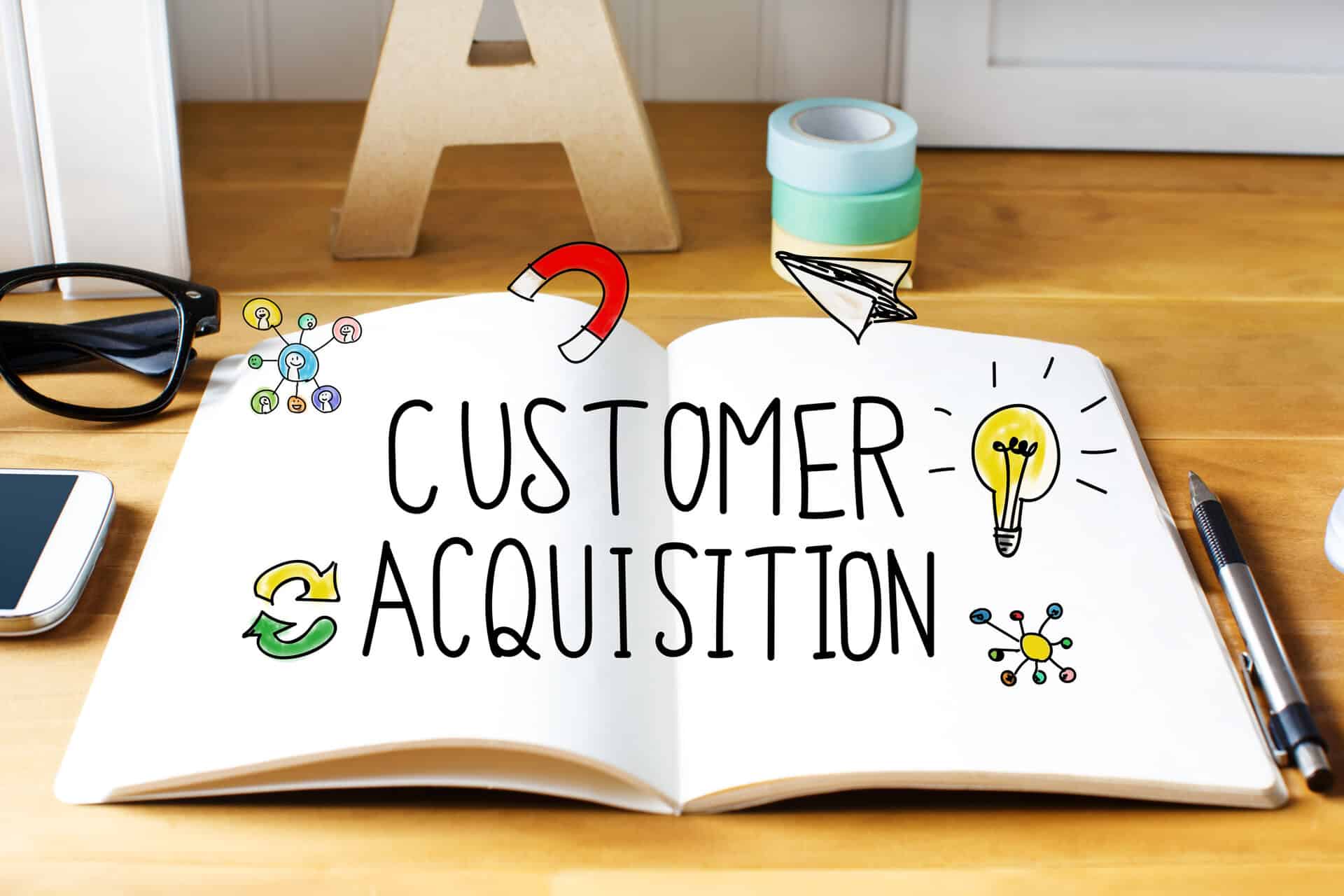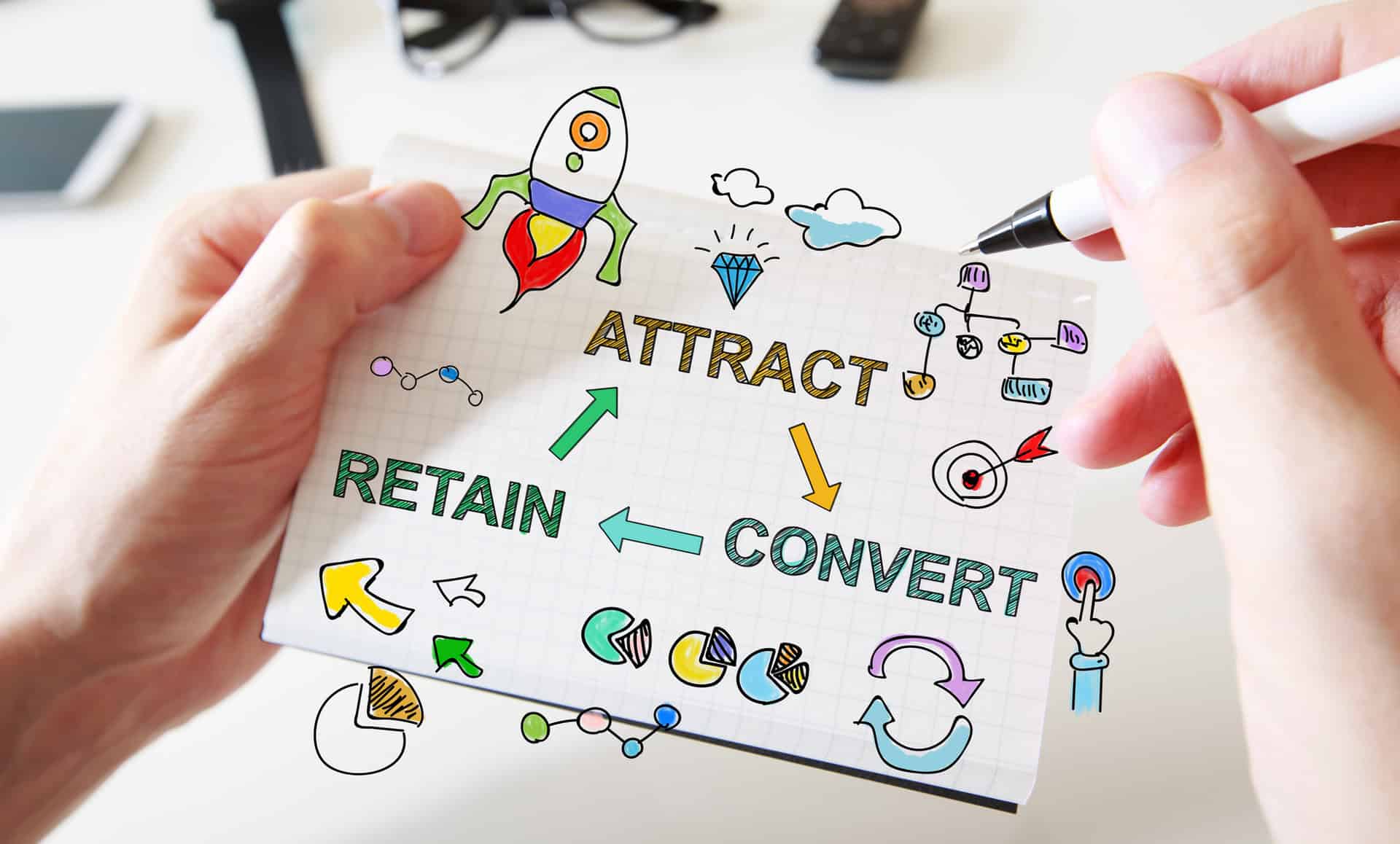
The 3 Stages of the Customer Acquisition Funnel

A long-standing model for explaining how businesses acquire customers uses the example of a funnel. This type of tool is wide at the top and tapers towards the bottom. The shape of a funnel corresponds to how a broad audience of consumers narrows down into leads, some of whom go on to become customers. It can be helpful to divide the customer acquisition funnel into three stages to better understand the buyer journey and optimize marketing strategies for your business.
Why Is the Customer Acquisition Funnel Model So Popular?

The funnel model for customer acquisition dates back to a 1924 book on direct sales. The author, William Townsend, was the first marketing professional to combine an older advertising model oriented around awareness, interest, desire and action, or the AIDA model, with the concept of a funnel.
Over the past century, funnels have become a common metaphor for describing how consumers become customers. This type of model can still be useful in the era of e-commerce. However, it is important to account for the fact that consumer behavior online is rarely as linear as a funnel model.
A consumer acquisition model almost always involves dividing a funnel into stages or steps. Digital marketers often refer to top-of-the-funnel or TOFU, middle-of-the-funnel or MOFU and bottom-of-the-funnel or BOFU strategies. These levels correspond to the stages of customer acquisition.
Optimize the Top of the Funnel
Organic search engine optimization generates leads in the first stage of the customer acquisition funnel. The SEO experts at BKA Content can help your business boost awareness and interest to streamline the journey toward conversions.
What Are the 3 Stages of Customer Acquisition?
There are three general stages of customer acquisition. The first pertains to lead generation, the second involves nurturing leads and the third includes conversions. You might find it useful to break each stage down into one or more steps. An overview of these stages can help you identify the most relevant steps to include based on the products or services that your business sells.
1. Generating Leads
The first stage of customer acquisition typically includes awareness and interest. Organic search engine optimization can be an effective TOFU marketing strategy. On- and off-page SEO can increase the visibility of your business and familiarize potential customers with your offerings.
On-page SEO helps search engines index your business website so that pages can rank in results for relevant searches. Technical optimization and content marketing are other on-page methods for raising search ranking positions and improving the experience of site visitors. Off-page SEO strategies, such as building quality backlinks, can boost the authority of your domain and increase awareness and trust among online shoppers.
A content marketing strategy is essential for organic SEO and can also spark consumer interest. Regularly posting optimized content that contains valuable information for prospective customers can boost rankings, click-through rates and site traffic. The first stage of the customer acquisition funnel involves taking strategic measures to increase awareness of your business and interest in what you are selling.
2. Nurturing Leads

The second stage of the funnel accounts for steps related to desire, evaluation or intent. As the funnel narrows, you should aim to learn more about your target audience and anticipate their needs. Taking a customer-centered approach at this stage allows for personalized outreach that can help your business stand out from the competition.
Your main priority in the second stage of customer acquisition is to nurture leads. Some of the most effective MOFU methods include email lists, targeted advertisements on social channels and communication with sales representatives. You can monitor the performance of these marketing touchpoints to prioritize the most effective channels and campaigns.
Analytics can shed light on the factors that motivate prospective customers and drive decision-making. You can track and monitor data to identify any pain points or sources of friction in the acquisition process. Knowing what drives shoppers to buy and emphasizing these factors while reducing obstacles can lead to higher rates of conversion and retention.
3. Connecting With Customers
The third stage of the customer acquisition funnel corresponds to the final step in the AIDA model. At this stage, customers are likely to have engaged in one or more micro-conversions, such as signing up for an email list or following a social account, in addition to a macro-conversion or purchase.
Recent models often go beyond purchasing to situate retention at the base of the funnel. This step can include further micro-conversions, such as taking surveys or writing reviews. It can be worthwhile for your business to incentivize ongoing engagement. Positive feedback is beneficial for generating and nurturing new leads in the preceding stages of the funnel.
Some marketing experts suggest that a cyclical framework, such as a flywheel, could be more relevant to e-commerce than a funnel. An acquisition cycle can account for the influence of reviews or testimonials from current or past customers on new leads. This version of the model also factors in ongoing service and other measures for maintaining satisfaction throughout the customer lifecycle. You can develop a model for your business that has any number of steps or take a cyclical, rather than a linear, approach to customer acquisition.
What Are the Steps in the Acquisition Funnel?
The customer acquisition funnel usually includes at least four steps: awareness, interest, decision and conversion. You can customize the steps of a funnel model by factoring in how your business markets products and services.
Many funnels for customer acquisition have four steps that align with the original AIDA model. These steps include awareness and interest at the top, desire at the middle and action at the bottom of the funnel. Acquisition funnels for digital marketing could also include a step for consideration, decision or intent in the middle and have retention as the final step.
What Is the Role of Organic SEO in the Customer Acquisition Funnel?
Organic SEO is a cost-effective way to raise consumer awareness, increase interest and guide purchasing decisions. Get in touch today to find out how BKA Content can develop an SEO strategy to optimize the top of the customer acquisition funnel and help your business get better results at every stage.
- How Roofing Companies Can Improve SEO in 2025 - October 4, 2025
- Keeping SEO In-House vs. Outsourcing - September 4, 2025
- Is SEO Hard To Learn? - August 15, 2025


